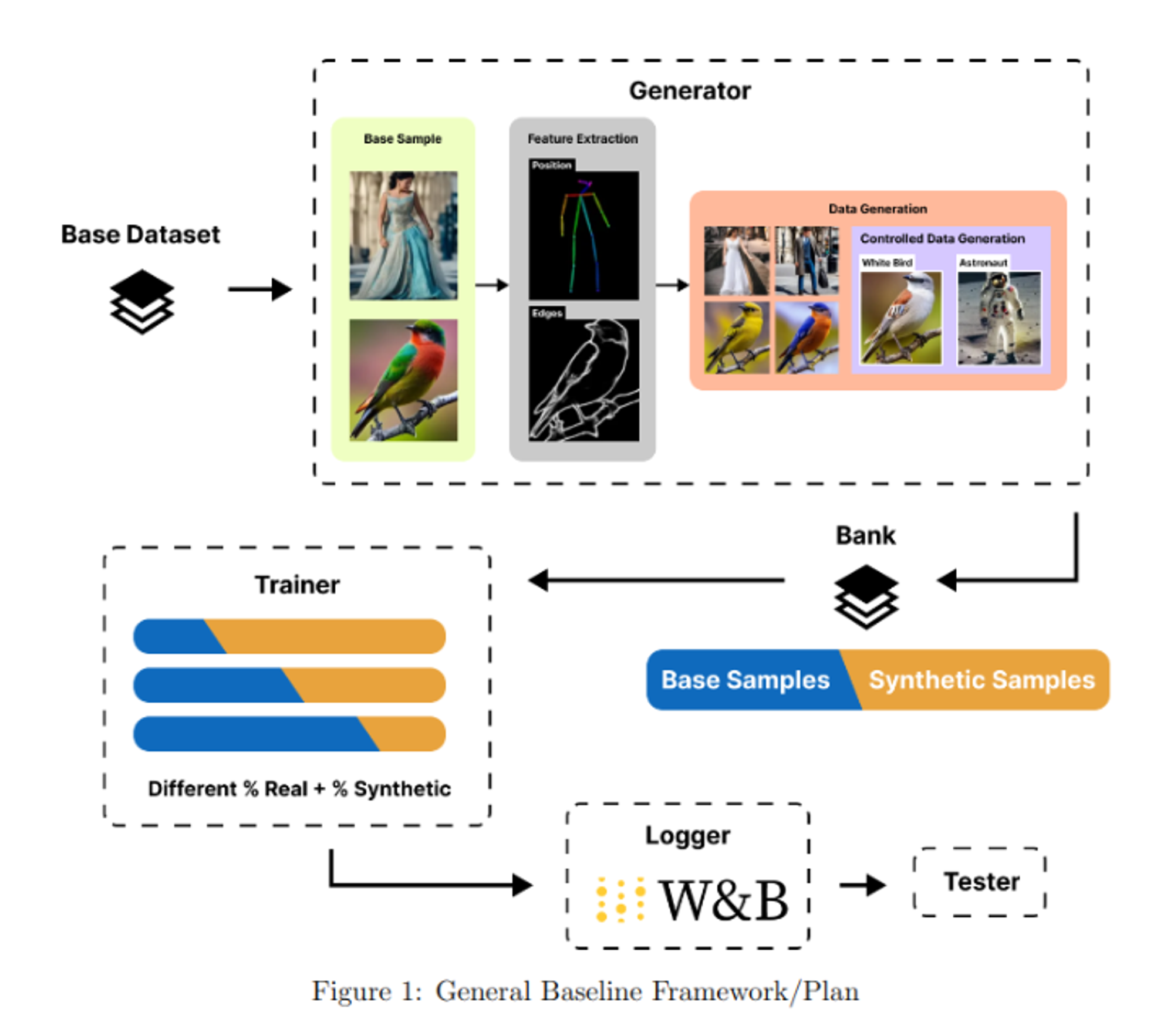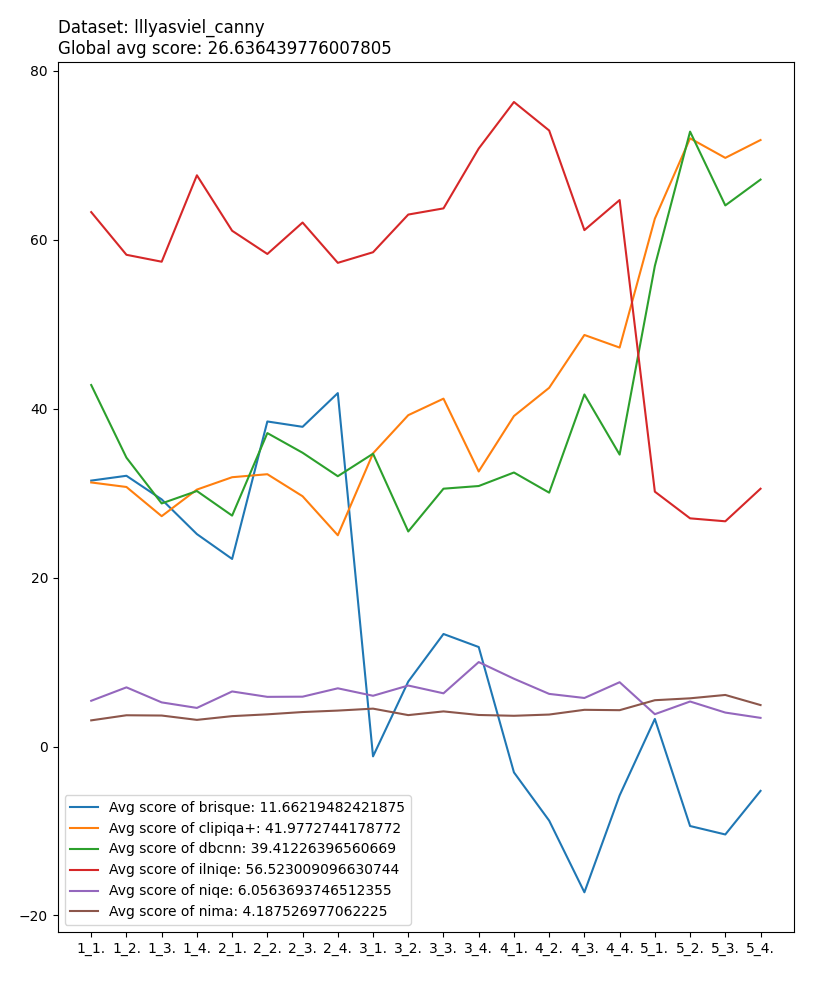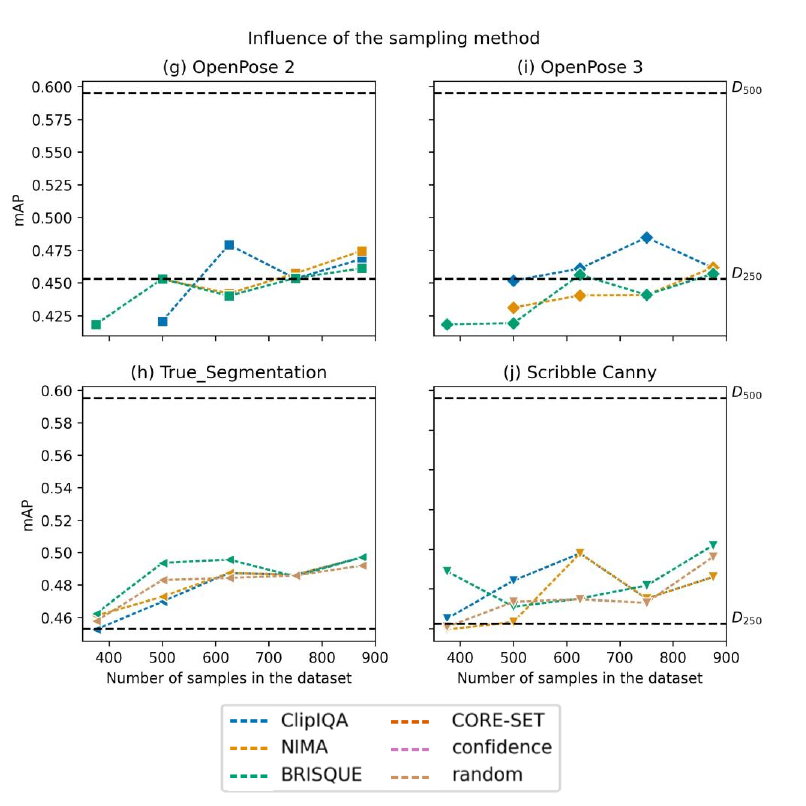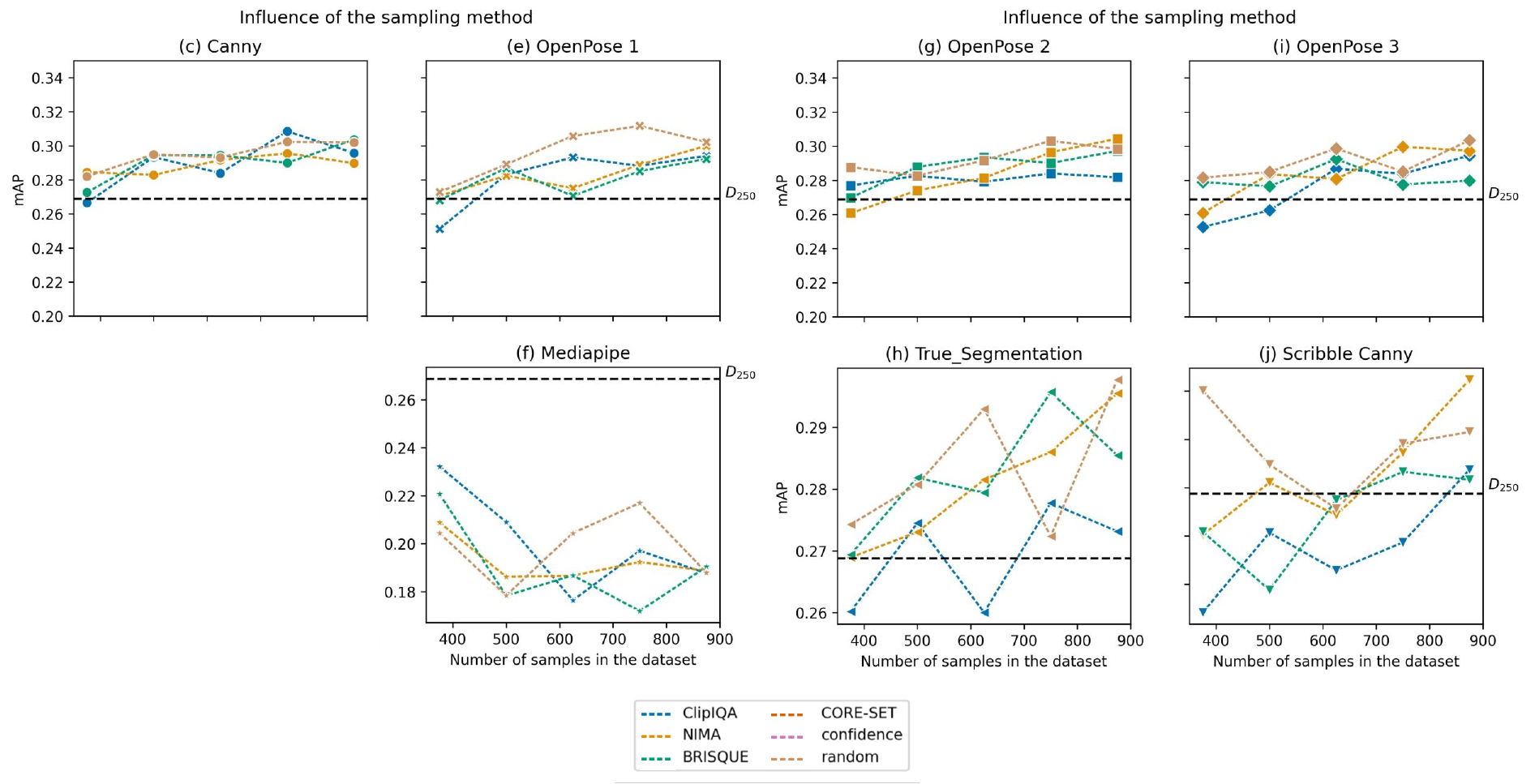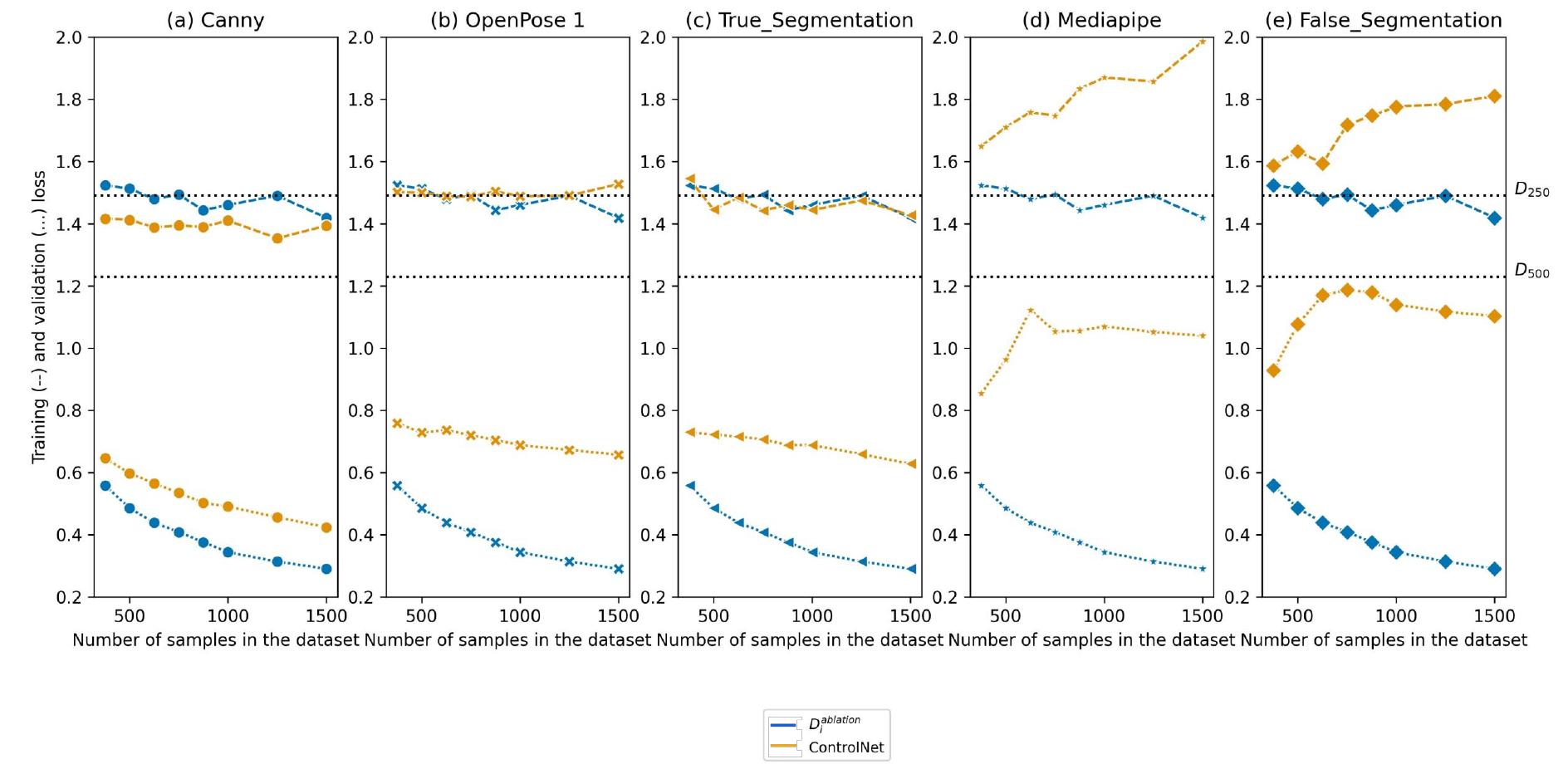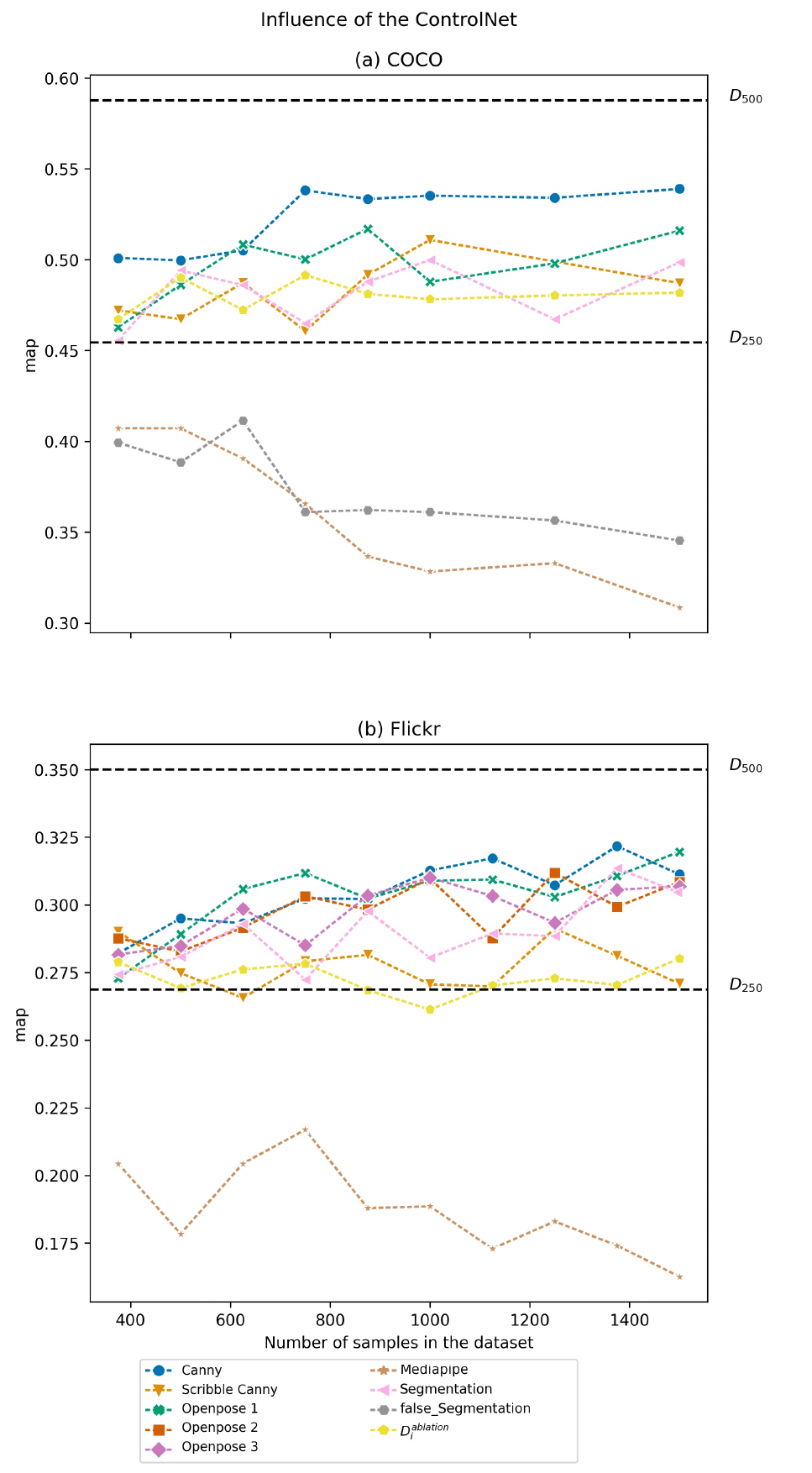This is a data generation framework that uses Stable Diffusion with ControlNet, to do Data Augmentation for Object Detection using YOLOv8
Models can be trained using a mix of real and generated data. They can also be logged and evaluated.
We recommend using a virtual environment. Install requirements :
pip install -r requirements.txt
- COCO PEOPLE dataset :
./run.sh coco
- Flickr30K Entities PEOPLE dataset :
./run.sh flickr30k
Data will be downloaded and put in the respective files for images, labels and captions.
To generate some images, you can use
./run.sh genSee the conf/config.yaml file for all details and configuration options.
You can also configure directly on the command line :
./run.sh gen model.cn_use=openpose prompt.base="Arnold" prompt.modifier="dancing"If you use the controlnet_segmentation ControlNet, You will find your images in data/generated/controlnet_segmentation along with the base image and the feature extracted.
The configuration options work for all scripts available in the framework. For example, you can have different initial data sizes by controlling sample numbers :
./run.sh coco ml.train_nb=500You can also launch multiple runs. Here's an example of a multi-run with 3 different generators :
./run.sh gen model.cn_use=frankjoshua_openpose,fusing_openpose,lllyasviel_openpose
List of available models can be found in conf/config.yaml. We have 4 available extractors at the moment (Segmentation, OpenPose, Canny, MediaPipeFace), If you add another control-net model, make sure you add one of the following strings to its name to set the extractor to use :
- openpose
- canny
- segmentation
- mediapipe_face
One way of testing the quality of the generated images is to use computational and statistical methods. One good library for it is IQA-PyTroch, you can go read its paper.
There are two approaches to measure image quality
- full reference: compare against a real pristine image
- no reference: compute metrics following a learned opinion
You can use metrics in the same way the generation is done:
# For paper
./run.sh src/iqa_paper.py
# Framework general script
./run.sh iqaIt follows the same configuration of the generation part, with the same file conf/config.yaml.
There is file created in data/iqa/<cn_use>_iqa.json with the following structure:
{
"image_paths": [
"data/generated/controlnet_segmentation/000000000474_1.png",
"data/generated/controlnet_segmentation/000000000474_2.png",
"data/generated/controlnet_segmentation/000000000474_3.png",
"data/generated/controlnet_segmentation/000000000474_4.png",
"data/generated/controlnet_segmentation/000000000474_5.png"
],
"name": "controlnet_segmentation",
"brisque": [
20.71453857421875,
11.63690185546875,
17.65740966796875,
5.10711669921875,
32.71502685546875
],
"dbcnn": [
0.7001792192459106,
0.6730189323425293,
0.5987531542778015,
0.5892908573150635,
0.5235083699226379
],
"ilniqe": [
27.35899873000946,
34.540625520909074,
26.03838433381286,
25.595288318528816,
34.6185153006446
]
}
We use wandb to track and visualize trainings.
wandb login
Create train.txt, val.txt, et test.txt :
./run.sh create_dataset
Launch the training !
./run.sh train
You can both create and launch at the same time to be able to execute multiple training with multiple augmentation percents on your server using hydra :
./run.sh create_n_train.py -m ml.augmentation_percent=0.1 ml.sampling.enable=True ml.sampling.metric=dbcnn,brisque ml.sampling.sample=best ml.epochs=15
The download folder can be set in the config file. You'll have folders inside for each wandb project. each project folder contains :
- all models for the project
- summary file with parameters and results (map, precision ..etc)
- in case of running
test.py: results.csv file containing the test results with map and other info.
./run.sh download.py ml.wandb.project=your-project ml.wandb.download.download=true ml.wandb.download.list_all=true
./run.sh test.py
Note Other scripts exist to execute different studies, like the usage of Active learning, which is still excremental, you can check the src folder for those scripts (This code is still not fully integrated into the framework, some path or configuration modifications might be necessary for correct execution).
Here are some plots for some of the many runs and studies that we performed :
